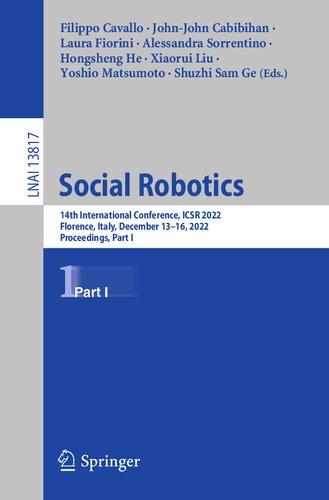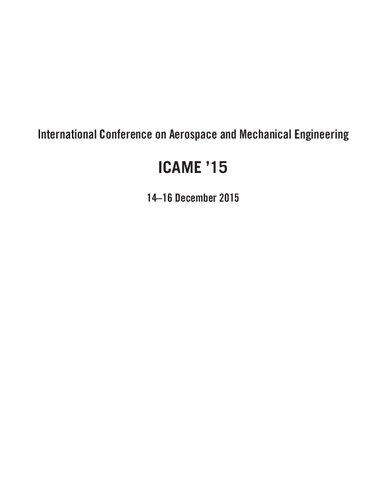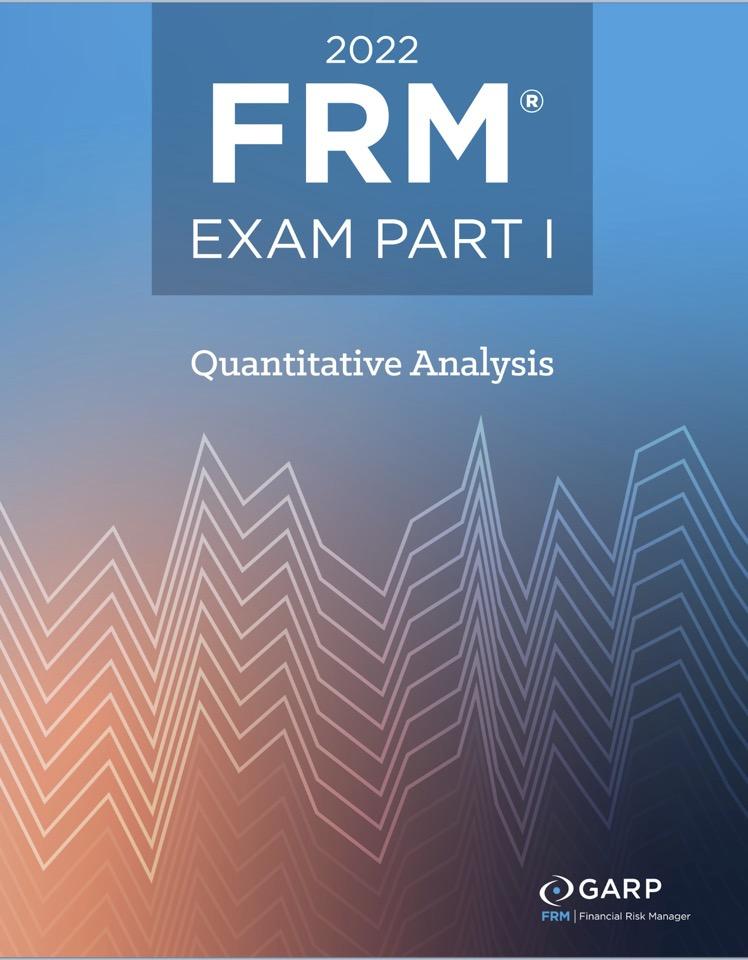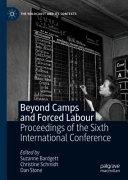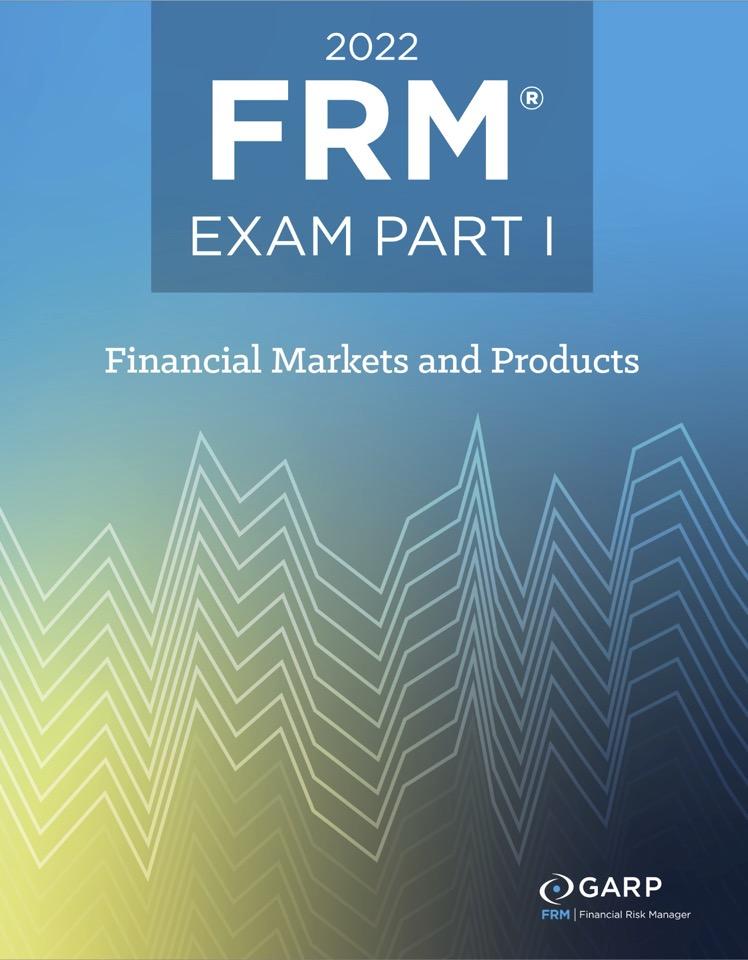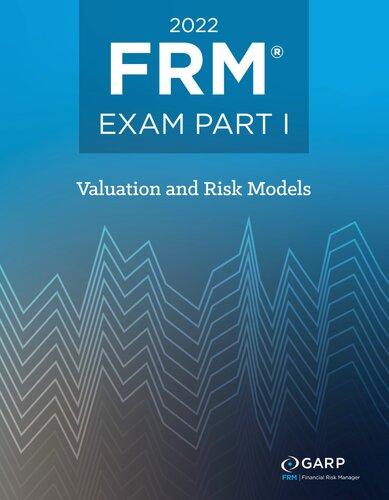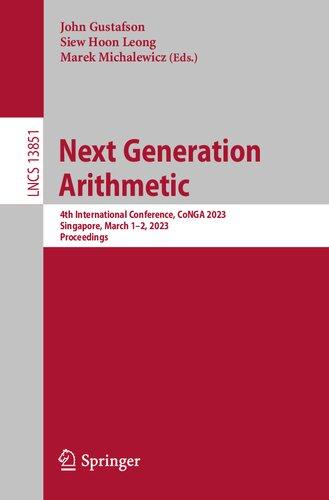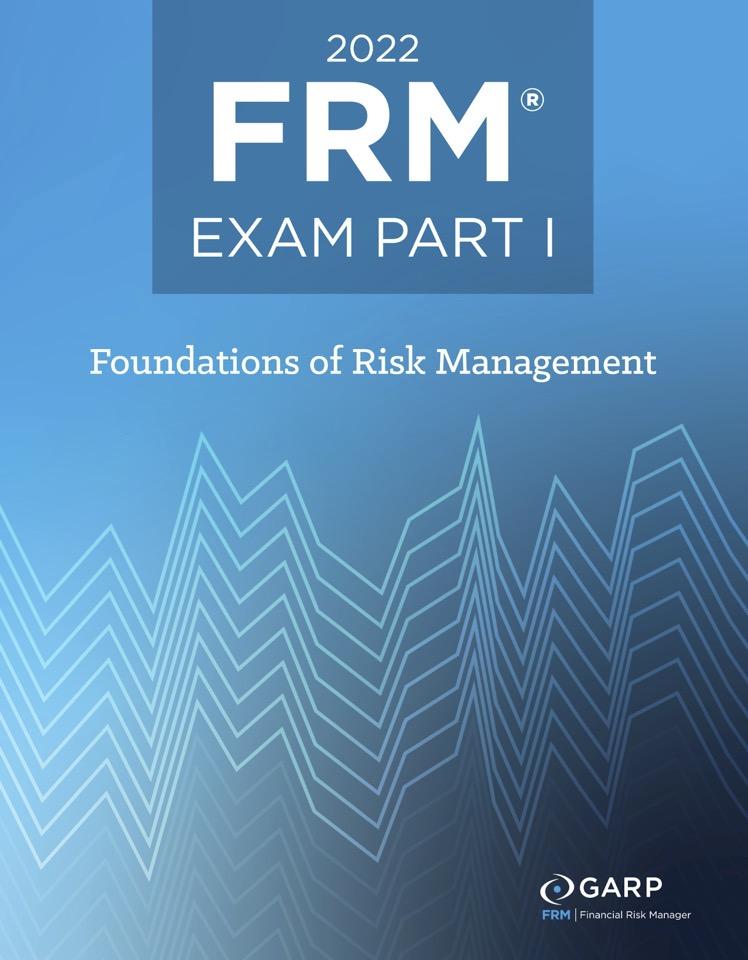Social Robotics: 14th International Conference, ICSR 2022, Florence, Italy, December 13–16, 2022, Proceedings, Part I Filippo Cavallo
Visit to download the full and correct content document: https://ebookmass.com/product/social-robotics-14th-international-conference-icsr-202 2-florence-italy-december-13-16-2022-proceedings-part-i-filippo-cavallo/
More products digital (pdf, epub, mobi) instant download maybe you interests ...
Chemistry fourteenth 14th 2022 Jason Overby
https://ebookmass.com/product/chemistryfourteenth-14th-2022-jason-overby/
International Conference on Aerospace and Mechanical Engineering ICAME ’15 14–16 December 2015 Coll.
https://ebookmass.com/product/international-conference-onaerospace-and-mechanical-engineeringicame-15-14-16-december-2015-coll/
2022 FRM© Exam Part I Quantitative Analysis 1st Edition Garp (Global Association Of Risk Professionals)
https://ebookmass.com/product/2022-frm-exam-part-i-quantitativeanalysis-1st-edition-garp-global-association-of-riskprofessionals/
Beyond Camps and Forced Labour : Proceedings of the Sixth International Conference 1st Edition Suzanne Bardgett
https://ebookmass.com/product/beyond-camps-and-forced-labourproceedings-of-the-sixth-international-conference-1st-editionsuzanne-bardgett/
2022 FRM© Exam Part I Financial Markets & Products 1st Edition Garp (Global Association Of Risk Professionals)
https://ebookmass.com/product/2022-frm-exam-part-i-financialmarkets-products-1st-edition-garp-global-association-of-riskprofessionals/
2022 FRM© Exam Part I Valuation & Risk Models 1st Edition Garp (Global Association Of Risk Professionals)
https://ebookmass.com/product/2022-frm-exam-part-i-valuationrisk-models-1st-edition-garp-global-association-of-riskprofessionals/
Italy at the Polls 2022: The Right Strikes Back Fabio Bordignon
https://ebookmass.com/product/italy-at-the-polls-2022-the-rightstrikes-back-fabio-bordignon/
Next Generation Arithmetic: 4th International Conference, CoNGA 2023, Singapore, March 1-2, 2023, Proceedings John Gustafson
https://ebookmass.com/product/next-generation-arithmetic-4thinternational-conference-conga-2023-singaporemarch-1-2-2023-proceedings-john-gustafson/
2022 FRM© Exam Part I Foundations of Risk Management 1st Edition Garp (Global Association Of Risk Professionals)
https://ebookmass.com/product/2022-frm-exam-part-i-foundationsof-risk-management-1st-edition-garp-global-association-of-riskprofessionals/
Filippo Cavallo · John-John Cabibihan · Laura Fiorini · Alessandra Sorrentino · Hongsheng He · Xiaorui Liu · Yoshio Matsumoto · Shuzhi Sam Ge (Eds.)
Social Robotics 14th International Conference, ICSR 2022 Florence, Italy, December 13–16, 2022 Proceedings, Part I
LectureNotesinArtificialIntelligence13817 SubseriesofLectureNotesinComputerScience
SeriesEditors
RandyGoebel UniversityofAlberta,Edmonton,Canada
WolfgangWahlster DFKI,Berlin,Germany
Zhi-HuaZhou
NanjingUniversity,Nanjing,China
FoundingEditor
JörgSiekmann
DFKIandSaarlandUniversity,Saarbrücken,Germany
Moreinformationaboutthissubseriesat https://link.springer.com/bookseries/1244
FilippoCavallo · John-JohnCabibihan ·
LauraFiorini · AlessandraSorrentino ·
HongshengHe · XiaoruiLiu ·
YoshioMatsumoto · ShuzhiSamGe(Eds.)
SocialRobotics 14thInternationalConference,ICSR2022 Florence,Italy,December13–16,2022
Proceedings,PartI
Editors
FilippoCavallo UniversityofFlorence Florence,Italy
LauraFiorini UniversityofFlorence Florence,Italy
HongshengHe WichitaStateUniversity Wichita,KS,USA
YoshioMatsumoto NationalInstituteofAdvancedIndustrial ScienceandTechnology Tsukuba,Japan
John-JohnCabibihan QatarUniversity Doha,Qatar
AlessandraSorrentino UniversityofFlorence Florence,Italy
XiaoruiLiu QingdaoUniversity Qingdao,China
ShuzhiSamGe NationalUniversityofSingapore Singapore,Singapore
ISSN0302-9743ISSN1611-3349(electronic) LectureNotesinArtificialIntelligence ISBN978-3-031-24666-1ISBN978-3-031-24667-8(eBook) https://doi.org/10.1007/978-3-031-24667-8
LNCSSublibrary:SL7–ArtificialIntelligence
©TheEditor(s)(ifapplicable)andTheAuthor(s),underexclusivelicense toSpringerNatureSwitzerlandAG2022
Thisworkissubjecttocopyright.AllrightsarereservedbythePublisher,whetherthewholeorpartofthe materialisconcerned,specificallytherightsoftranslation,reprinting,reuseofillustrations,recitation, broadcasting,reproductiononmicrofilmsorinanyotherphysicalway,andtransmissionorinformation storageandretrieval,electronicadaptation,computersoftware,orbysimilarordissimilarmethodologynow knownorhereafterdeveloped.
Theuseofgeneraldescriptivenames,registerednames,trademarks,servicemarks,etc.inthispublication doesnotimply,evenintheabsenceofaspecificstatement,thatsuchnamesareexemptfromtherelevant protectivelawsandregulationsandthereforefreeforgeneraluse.
Thepublisher,theauthors,andtheeditorsaresafetoassumethattheadviceandinformationinthisbookare believedtobetrueandaccurateatthedateofpublication.Neitherthepublishernortheauthorsortheeditors giveawarranty,expressedorimplied,withrespecttothematerialcontainedhereinorforanyerrorsor omissionsthatmayhavebeenmade.Thepublisherremainsneutralwithregardtojurisdictionalclaimsin publishedmapsandinstitutionalaffiliations.
ThisSpringerimprintispublishedbytheregisteredcompanySpringerNatureSwitzerlandAG Theregisteredcompanyaddressis:Gewerbestrasse11,6330Cham,Switzerland
Preface The14thInternationalConferenceonSocialRobotics(ICSR2022)washeldasatraditionalin-personconferenceinFlorence,ItalyonDecember13th–16th,2022.Thetheme ofICSR2022wasSocialRobotsforAssistedLivingandHealthcare,emphasizingon theincreasingimportanceofsocialroboticsinhumandailylivingandsociety.
TheInternationalConferenceonSocialRoboticsbringstogetherresearchersand practitionersworkingontheinteractionbetweenhumansandintelligentrobotsandon theintegrationofrobotsintothefabricofoursociety.Outofatotalof143submitted manuscriptsreviewedbyadedicatedinternationalteamofeditors,associateeditorsand reviewers,111fullpaperswereselectedforinclusionintotheproceedingsinthisbook andpresentedduringthetechnicalandspecialsessionsandtheconference.Inadditionto paperpresentationsessions,ICSR2021alsofeaturedthreekeynotetalks,twelveworkshops,tworobotdesigncompetitions,andexhibitions.Thekeynotetalksweredeliveredbythreerenownedresearchers–ProfessorKerstinDautenhahnfromUniversityof Waterloo,Canada,ProfessorMariaChiaraCarrozza,ItalianNationalResearchCouncil (CNR),Italy,andProfessorOussamaKhatib,StanfordUniversity,UnitedStates.
WewouldliketoexpressoursinceregratitudetoallmembersoftheSteeringCommittee,InternationalAdvisoryCommittee,OrganizingCommittee,andvolunteersfor theirdedicationinmakingtheconferenceagreatsuccess.Weareindebtedtotheassociateeditorsandreviewersfortheirhardworkintherigorousreviewofthepapers.We arealsoverygratefultotheauthors,participants,andsponsors,forthecontinuedsupport toICSR.
December2022FilippoCavallo
John-JohnCabibihan
LauraFiorini
AlessandraSorrentino
HongshengHe
XiaoruiLiu
YoshioMatsumoto
ShuzhiSamGe
Organization GeneralChair
Cavallo,FilippoUniversityofFlorence,Italy
Co-generalChair
Cabibihan,John-JohnQatarUniversity,Qatar
HonoraryChair
Ge,ShuzhiSamNationalUniversityofSingapore,Singapore
ProgramChairs
Fiorini,LauraUniversitàdeglistudidiFirenze,Italy
Liu,XiaoruiQingdaoUniversity,China
Matsumoto,YoshioNationalInstituteofAdvancedIndustrialScience andTechnology,Japan
WorkshopChairs
Sorrentino,AlessandraUniversityofFlorence,Italy
LocalArrangementChairs
LaViola,CarloUniversityofFlorence,Italy
Mancioppi,GianmariaScuolaSuperioreSant’Anna,Italy
CompetitionChair
KumarPandey,AmitbeingAILimited,HongKong,China;SocientsAI andRobotics,Paris,France
PublicationChair
He,HongshengWichitaStateUniversity,USA
Rovini,ErikaUniversityofFlorence,Italy
PublicityChairs
Trovato,GabrieleShibauraInstituteofTechnology,Tokyo,Japan Zhao,XiaopengUniversityofTennessee,USA
StandingCommittee
Ge,ShuzhiSamNationalUniversityofSingapore,Singapore
InternationalProgramCommittee
Alhaddad,AhmadYaserQatarUniversity,Qatar Belpaeme,TonyGhentUniversity,Belgium Borghese,N.AlbertoUniversityofMilan,Italy Cangelosi,AngeloUniversityofManchester,UK Chi,WenzhengSoochowUniversity,China Cortellessa,GabriellaISTC-CNR,Italy
D’Onofrio,GraziaIRCSSOspedaleCasaSollievodellaSofferenza, Italy
DeOliveira,EwertonUniversidadeFederaldaParaiba,Brazil Esposito,AnnaUniversityofCampania,Italy Fortunati,LeopoldinaUniversityofUdine,Italy Greco,ClaudiaUniversityofCampania,Italy Greer,JulienneUniversityofTexasatArlington,USA Hu,YueUniversityofWaterloo,Canada Jiang,WanyueQingdaoUniversity,China Katsanis,IliasUniversityoftheAegean,Greece Li,DongyuBeihangUniversity,China Liu,XiaoruiQingdaoUniversity,China Louie,Wing-Yue(Geoffrey)OaklandUniversity,USA Luperto,MatteoUniversitàdegliStudidiMilano,Milano,Italy Mastrogiovanni,FulvioUniversityofGenoa,Italy Menezes,PauloUniversityofCoimbra,Portugal Perugia,GiuliaEindhovenUniversityofTechnology, TheNetherlands
Rossi,AlessandraUniversityofNaplesFedericoII,Italy Rossi,SilviaUniversityofNaplesFedericoII,Italy Sciutti,AlessandraItalianInstituteofTechnology,Italy Trigili,EmilioScuolaSuperioreSant’Anna,TheBioRobotics Institute,Pontedera,Italy Wang,WeiBeihangUniversity,China WingCheeSo,CatherineChineseUniversityofHongKong,China
Wykowska,AgnieszkaIstitutoItalianodiTecnologia,Genoa,Italy Xu,JinOhioStateUniversity,USA
AssociateEditors
Cavallo,FilippoUniversityofFlorence,Italy Fiorini,LauraUniversitàdeglistudidiFirenze,Italy He,HongshengWichitaStateUniversity,USA Rovini,ErikaUniversityofFlorence,Italy Sorrentino,AlessandraUniversityofFlorence,Italy
Reviewers
Abbasi,NidaItrat Alban,Ahmad Alhaddad,AhmadYaser Amorese,Terry Andriella,Antonio Angelopoulos,Georgios Arnelid,Maria Avelino,João Banfi,Jacopo Beraldo,Gloria Cabibihan,John-John Carreno-Medrano,Pamela Chen,Shengkang Chi,Wenzheng Cortellessa,Gabriella Cumbal,Ronald DeOliveira,Ewerton DelDuchetto,Francesco DiNuovo,Alessandro Esposito,Anna Faridghasemnia,Mohamadreza Fiorini,Laura Forgas-Coll,Santiago Fortunati,Leopoldina Fracasso,Francesca Friebe,Kassandra Gaballa,Aya Galofaro,Elisa Gamboa-Montero,JuanJosé Getson,Cristina Goldsmith,Clarissa
Gonge,Sudhanshu Grazi,Lorenzo Greco,Claudia Haring,Kerstin He,Hongsheng Hellou,Mehdi Higgins,Angela Hu,Yue Ivanova,Ekaterina Jiang,Wanyue Just,Fabian Kashyap,Anwesha Katsanis,Ilias Khubchandani,Dr.Payal Kim,Hyungil Kong,Yuqi Kshirsagar,Alap LaViola,Carlo Lacroix,Dimitri Lastrico,Linda Lauretti,Clemente Li,Yan Li,Dongyu Limongelli,Rocco Lisy,Dominika Liu,Ziming Longatelli,Valeria Lotti,Nicola Louie,Wing-Yue(Geoffrey) Luperto,Matteo Mancioppi,Gianmaria
Marques-Villarroya,Sara Marra,Alessandra Mentasti,Simone Morillo-Mendez,Lucas Morreale,Luca Ning,Mang
Oddi,Angelo Orlandini,Andrea Perugia,Giulia Pipino,Vanessa Proietti,Tommaso Ragab,AbdelrahmanMohamed Raimo,Gennaro Rawal,Niyati RezaeiKhavas,Zahra Riches,Lewis RodriguezLeon,JhonFreddy
Rogers,Kantwon Romeo,Marta Rossi,Silvia Rossi,Alessandra Rovini,Erika SantosAssunção,Gustavo Miguel Saveriano,Matteo ScottodiLuzio,Francesco Semeraro,Francesco Shahverdi,Pourya Shangguan,Zhegong Sharma,VinayKrishna Shatwell,David Sorrentino,Alessandra Sun,Zhirui Tang,Zhihao
Contents–PartI SocialRobotNavigationandInteractionCapabilities(Voice,Tactile)
Socially-AwareMobileRobotTrajectoriesforFace-to-FaceInteractions.......3 YalunWen,XingweiWu,KatsuYamane,andSoshiIba
Vehicle-To-PedestrianCommunicationFeedbackModule:AStudy onIncreasingLegibility,PublicAcceptanceandTrust......................14 MelanieSchmidt-WolfandDavidFeil-Seifer
Let’sRunanOnlineProxemicsStudy!But,HowDoResultsCompare toIn-Person?.........................................................24 SiyaKunde,NathanSimms,GersonUriarte,andBrittanyDuncan
ARPoint&Click:AnInterfaceforSettingRobotNavigationGoals...........38 MorrisGu,ElizabethCroft,andAkanselCosgun
Human-AwareSubgoalGenerationinCrowdedIndoorEnvironments.........50 NickAhSen,PamelaCarreno-Medrano,andDanaKuli´c
Speech-DrivenRobotFaceActionGenerationwithDeepGenerative ModelforSocialRobots................................................61 ChuangYu,HengZhang,ZhegongShangguan,XiaoxuanHei, AngeloCangelosi,andAdrianaTapus
DesignofaSocialMediaVoiceAssistantforOlderAdults..................75 JamyLi,NoahZijieQu,andKarenPenarandaValdivia
MigratableAI:PersonalizingDialogConversationswithMigrationContext....89 RaviTejwani,BorisKatz,andCynthiaBreazeal
GeneratingNaturalLanguageResponsesinRobot-MediatedReferential CommunicationTaskstoSimulateTheoryofMind.........................100 ZimingLiu,YigangQin,HuiqiZou,EunJinPaek,DevinCasenhiser, WenjunZhou,andXiaopengZhao
TowardsaFrameworkforSocialRobotCo-speechGestureGeneration withSemanticExpression..............................................110 HengZhang,ChuangYu,andAdrianaTapus
TactileInteractionwithaRobotLeadstoIncreasedRisk-Taking..............120 QiaoqiaoRenandTonyBelpaeme
AffectDisplayRecognitionThroughTactileandVisualStimuli inaSocialRobot......................................................130
SaraMarques-Villarroya,JuanJoseGamboa-Montero, CristinaJumela-Yedra,JoseCarlosCastillo,andMiguelAngelSalichs
SocialRobotPerceptionandControlCapabilities Path-ConstrainedAdmittanceControlofHuman-RobotInteraction forUpperLimbRehabilitation..........................................143
DarioOnfiani,MarcoCaramaschi,LuigiBiagiotti,andFabioPini
CausalDiscoveryofDynamicModelsforPredictingHumanSpatial Interactions...........................................................154
LucaCastri,SariahMghames,MarcHanheide,andNicolaBellotto
LearningUserHabitstoEnhanceRoboticDaily-LivingAssistance...........165 MatteoPantaleoni,AmedeoCesta,AlessandroUmbrico, andAndreaOrlandini
Multi-modalDataFusionforPeoplePerceptionintheSocialRobotHaru......174 RicardoRagel,RafaelRey,ÁlvaroPáez,JavierPonce, KeisukeNakamura,FernandoCaballero,LuisMerino,andRandyGómez
AdaptiveBehaviorGenerationofSocialRobotsBasedonUserBehavior Recognition..........................................................188 Woo-RiKo,MinsuJang,JaeyeonLee,andJaehongKim
ATransformer-BasedApproachforChoosingActionsinSocialRobotics......198 RiccardoDeBenedictis,GloriaBeraldo,GabriellaCortellessa, FrancescaFracasso,andAmedeoCesta
DeepReinforcementLearningfortheAutonomousAdaptiveBehavior ofSocialRobots.......................................................208 MarcosMaroto-Gómez,MaríaMalfaz,ÁlvaroCastro-González, andMiguelÁngelSalichs
SharewithMe:AStudyonaSocialRobotCollectingMentalHealthData.....218 RaidaKarim,EdgarLopez,KatelynnOleson,TonyLi,ElinA.Björling, andMayaCakmak
ClassificationofPersonalDataUsedbyPersonalisedRobotCompanions BasedonConcernofExposure..........................................228 LewisRiches,KhengLeeKoay,andPatrickHolthaus
InvestigatingNonVerbalInteractionwithSocialRobots
AffectiveHuman-RobotInteractionwithMultimodalExplanations...........241 HongboZhu,ChuangYu,andAngeloCangelosi
WhentoHelp?AMultimodalArchitectureforRecognizingWhenaUser NeedsHelpfromaSocialRobot.........................................253 JasonR.Wilson,PhyoThutaAung,andIsabelleBoucher
IfYouAreCareful,SoAmI!HowRobotCommunicativeMotionsCan InfluenceHumanApproachinaJointTask................................267
LindaLastrico,NunoFerreiraDuarte,AlessandroCarfí, FrancescoRea,FulvioMastrogiovanni,AlessandraSciutti, andJoséSantos-Victor
ExploringNon-verbalStrategiesforInitiatinganHRI.......................280 FrancescoVigniandSilviaRossi
OntheEmotionalTransparencyofaNon-humanoidSocialRobot............290 FrancescoVigni,AlessandraRossi,LindaMiccio,andSilviaRossi
TransparentInteractiveReinforcementLearningUsingEmotional Behaviours...........................................................300 GeorgiosAngelopoulos,AlessandraRossi,GianlucaL’Arco, andSilviaRossi
WhatDoILookLike?AConditionalGANBasedRobotFacial Self-AwarenessApproach..............................................312 ShangguanZhegong,ChuangYu,WenjieHuang,ZexuanSun, andAdrianaTapus
ModelingandEvaluationofHumanMotorLearningbyFinger Manipulandum........................................................325 AmrOkasha,Sabahat¸Sengezer,OzancanÖzdemir,CeylanYozgatlıgil, AliE.Turgut,andKutlukB.Arıkan
MotorInterferenceofIncongruentHandMotionsinHRIDepends onMovementVelocity.................................................335 MertcanKayaandKoljaKühnlenz
FosterAttentionandEngagementStrategiesinSocialRobots
AttributingIntentionalitytoArtificialAgents:ExposureVersusInteractive Scenarios.............................................................347
LorenzoParenti,SerenaMarchesi,MarwenBelkaid, andAgnieszkaWykowska
DoesEmbodimentandInteractionAffecttheAdoptionoftheIntentional StanceTowardsaHumanoidRobot?.....................................357 ZiggyO’Reilly,UmaPrashantNavare,SerenaMarchesi, andAgnieszkaWykowska
ACasefortheDesignofAttentionandGestureSystemsforSocialRobots....367 RomainMaure,ErikA.Wengle,UtkuNorman, DanielCarnietoTozadore,andBarbaraBruno
IntroducingPsychologyStrategiestoIncreaseEngagementonSocial Robots...............................................................378
FernandoAlonso-Martin,SaraCarrasco-Martínez, JuanJoséGamboa-Montero,EnriqueFernández-Rodicio, andMiguelÁngelSalichs
Hey,Robot!AnInvestigationofGettingRobot’sAttentionThroughTouch....388 HagenLehmann,AdamRojik,KassandraFriebe,andMatejHoffmann
GazeCueingandtheRoleofPresenceinHuman-RobotInteraction...........402 KassandraFriebe,SabínaSamporová,KristínaMalinovská, andMatejHoffmann
SpecialSession1:SocialRoboticsDrivenbyIntelligentPerception andEndogenousEmotion-MotivationCore
AnEfficientMedicineIdentificationandDeliverySystemBased onMobileManipulationRobot..........................................417 MeiyuanZou,QingchuanXu,JianfengBian,DingfengChen, WenzhengChi,andLiningSun
AGenerativeAdversarialNetworkBasedMotionPlanningFramework forMobileRobotsinDynamicHuman-RobotIntegrationEnvironments.......427 YuqiKong,YaoWang,YangHong,RongguangYe,WenzhengChi, andLiningSun
Researchon3DFaceReconstructionBasedonWeaklySupervisedLearning...440 ZeweiSu,LanfangDong,XuejieJi,GuomingLi,andXierongZhu
RobotDifferentialBehavioralExpressioninDifferentScenarios.............451 ZhonghaoZhang,WanyueJiang,RuiZhang,YuhanZheng, andShuzhiSamGe
BuildinganAffectiveModelforSocialRobotswithCustomizable Personality...........................................................463 ZiyanZhang,WenjingYang,andWeiWang
AMultimodalPerceptionandCognitionFrameworkandItsApplication forSocialRobots......................................................475 LanfangDong,PuZhaoHu,XiaoXiao,YingChaoTang,MengMao, andGuomingLi
IndoorMobileRobotSociallyConcomitantNavigationSystem..............485 RuiZhang,WanyueJiang,ZhonghaoZhang,YuhanZheng, andShuzhiSamGe
NRTIRLBasedNN-RRT*PathPlannerinHuman-RobotInteraction Environment..........................................................496 YaoWang,YuqiKong,ZhiyuDing,WenzhengChi,andLiningSun
SpecialSession2:AdaptiveBehavioralModelsofRoboticSystems BasedonBrain-InspiredAICognitiveArchitectures
CanIFeelYou?RecognizingHuman’sEmotionsDuringHuman-Robot Interaction............................................................511
LauraFiorini,FedericaG.C.Loizzo,GraziaD’Onofrio, AlessandraSorrentino,FilomenaCiccone,SergioRusso, FrancescoGiuliani,DanieleSancarlo,andFilippoCavallo
AReinforcementLearningFrameworktoFosterAffectiveEmpathy inSocialRobots.......................................................522 AlessandraSorrentino,GustavoAssunção,FilippoCavallo, LauraFiorini,andPauloMenezes
RoboticsTechnologyforPainTreatmentandManagement:AReview.........534 AngelaHiggins,AlisonLlewellyn,EmmaDures, andPramindaCaleb-Solly
ImplicationsofRobotBackchannellinginCognitiveTherapy................546 AntonioAndriella,CarmeTorras,andGuillemAlenyà
PrototypinganArchitectureofAffectiveRoboticSystemsBased ontheTheoryofConstructedEmotion...................................558 KuldarTaveterandAlarKirikal
ANamedEntityRecognitionModelforManufacturingProcessBased ontheBERTLanguageModelScheme...................................576
ManuShrivastava,KotaSeri,andHiroakiWagatsuma
AuthorIndex .........................................................589
Contents–PartII AdvancedHRICapabilitiesforInteractingwithChildren
AModelChild?BehaviorModelsforSimulatedInfant-RobotInteraction.....3 AmeerHelmi,KristenM.Koenig,andNaomiT.Fitter
ChildrenPerceivedPerceptionofaMini-HumanoidSocialRobotBased onaPsychometricScale:APilotStudyinGreece..........................13 IliasKatsanis,AhmadYaserAlhaddad,John-JohnCabibihan, andVassilisMoulianitis
ComputationalAudioModellingforRobot-AssistedAssessment ofChildren’sMentalWellbeing..........................................23
NidaItratAbbasi,MicolSpitale,JoannaAnderson,TamsinFord, PeterB.Jones,andHaticeGunes
TheSoundofActuatorsinChildrenwithASD,BeneficialorDisruptive?......36
MelanieJouaiti,EloiseZehnder,andFrançoisCharpillet
EvaluatingRobotAcceptanceinChildrenwithASDandTheirParents........45 EloiseZehnder,MelanieJouaiti,andFrançoisCharpillet
LivingwithHaru4Kids:ChildandParentPerceptionsofaCo-Habitation RobotforChildren....................................................54
LeighLevinson,GonzaloA.Garcia,GuillermoPerez, GloriaAlvarez-Benito,J.GabrielAmores,MarioCastaño-Ocaña, ManuelCastro-Malet,RandyGomez,andSelmaŠabanovi´c
TowardsDevelopingAdaptiveRobotControllersforChildrenwithUpper LimbImpairments-InitialDataCollectionandAnalysis....................64
MelanieJouaiti,NeginAzizi,StevenLawrence,andKerstinDautenhahn
AFrameworkforAssistiveSocialRobotsforDetectingAggression inChildren...........................................................74
AhmadYaserAlhaddad,AbdulazizAl-Ali,AmitKumarPandey, andJohn-JohnCabibihan
KasparCausallyExplains...............................................85
HugoAraujo,PatrickHolthaus,MarinaSardaGou,GabriellaLakatos, GiuliaGalizia,LukeWood,BenRobins,MohammadRezaMousavi, andFarshidAmirabdollahian
SocialRobotsasAdvancedEducationalTool
TrainingSchoolTeacherstoUseRobotsasanEducationalTool:The ImpactonRoboticsPerception..........................................103
GiuliaPusceddu,FrancescaCocchella,MichelaBogliolo, GiuliaBelgiovine,LindaLastrico,MauraCasadio,FrancescoRea, andAlessandraSciutti
MoveableÄlıpbi:TheMontessoriMethodforRobot-AssistedAlphabet Learning.............................................................114
AidaZhanatkyzy,ZhansauleTelisheva,AidaAmirova, NurziyaOralbayeva,ArnaAimysheva,andAnaraSandygulova
SocialRobotsinLearningScenarios:UsefulToolstoImproveStudents’ AttentionorPotentialSourcesofDistraction?.............................124
SamanthaCharpentier,MohamedChetouani,IsisTruck,DavidCohen, andSalvatoreM.Anzalone
AreYouPayingAttention?TheEffectofEmbodiedInteraction withanAdaptiveRobotTutoronUserEngagementandLearning Performance..........................................................135
AnitaVrins,EthelPruss,JosPrinsen,CaterinaCeccato, andMaryamAlimardani
UserEvaluationofSocialRobotsasaToolinOne-to-OneInstructional SettingsforStudentswithLearningDisabilities............................146
NeginAzizi,ShrutiChandra,MikeGray,JenniferFane,MelissaSager, andKerstinDautenhahn
KinestheticTeachingofaRobotoverMultipleSessions:ImpactsonSpeed andSuccess..........................................................160
PouryaAliasghari,MoojanGhafurian,ChrystopherL.Nehaniv, andKerstinDautenhahn
ExpandingtheUseofRoboticsinASDProgramsinaRealEducational Setting...............................................................171
SeleneCaro-Via,MarcEspuña,andRaquelRos
AnOverviewofSociallyAssistiveRoboticsforSpecialEducation...........183
ShyamliSuneeshandVirginiaRuizGarate
PreliminaryInvestigationoftheAcceptanceofaTeleoperatedInteractive RobotParticipatinginaClassroomby5thGradeStudents...................194
MegumiKawata,MasashiMaeda,YuichiroYoshikawa, HirokazuKumazaki,HirokoKamide,JunBaba,NaomiMatsuura, andHiroshiIshiguro
TheEffectsofDyadicvsTriadicInteractiononChildren’sCognitive andAffectiveGainsinRobot-AssistedAlphabetLearning...................204
ZhansauleTelisheva,AidaZhanatkyzy,NurziyaOralbayeva, AidaAmirova,ArnaAimysheva,andAnaraSandygulova
SocialRobotApplicationsinClinicalandAssistiveScenarios
DeepLearning-BasedMulti-modalCOVID-19ScreeningbySocially AssistiveRobotsUsingCoughandBreathingSymptoms....................217 MeysamEffatiandGoldieNejat
SocialRobotstoSupportAssistedLivingforPersonswithAlzheimer’s andRelatedDementias.................................................228 TylerMorris,HirokoDodge,SylviaCerel-Suhl,andXiaopengZhao
AssistantRobotsinGermanHospitals:MeasuringValueDrivers andWillingnesstoPay.................................................238
MarijaRadic,DubravkoRadic,andAgnesVosen
LonelinessDuringCOVID-19InfluencesMindandLikeabilityRatings intheUncannyValley..................................................248 AbdulazizAbubshait,YicenXie,Jung-KuanLin,MarissaToma, andEvaWiese
TelepresenceRobotforIsolatedPatientsintheCOVID-19Pandemic: EffectsofSocio-relationshipandTelecommunicationDeviceTypes onPatients’AcceptanceofRobots.......................................263 SoyeonShin,DahyunKang,andSonyaS.Kwak
TowardstheDeploymentofaSocialRobotatanElderlyDayCareFacility....277 SaraCooperandRaquelRos
TowardsaFrameworkfortheWhole-BodyTeleoperationofaHumanoid RobotinHealthcareSettings............................................288 FrancescoPorta,CarmineTommasoRecchiuto,MauraCasadio, andAntonioSgorbissa
SocialRobotsintheStutteringClinic:AHuman-CentredExploration withSpeechLanguagePathologists......................................299 ShrutiChandra,TorreyLoucks,GerardoChavezCastaneda, andKerstinDautenhahn
EvaluatingHuman-in-the-LoopAssistiveFeedingRobotsUnderDifferent LevelsofAutonomywithVRSimulationandPhysiologicalSensors..........314
TongXu,TianlinZhao,JesusG.Cruz-Garza, TapomayukhBhattacharjee,andSalehKalantari
OntheWaytotheFuture—AssistantRobotsinHospitalsandCareFacilities...328
MarijaRadic,AgnesVosen,andCarolineMichler
DevelopmentofRoboticCareforOlderAdultswithDementia:Focus GroupandSurveyStudy................................................338
FengpeiYuan,MarieBoltz,BetsyKemeny,SharonBowland, KristinaWick,andXiaopengZhao
AMobileSocialHandDisinfectionRobotforUseinHospitals..............348
OskarPalinko,RasmusP.Junge,DanielG.Holm,andLeonBodenhagen
IterativeDevelopmentofaServiceRobotforLaundryTransport inNursingHomes.....................................................359
JonasFrei,AndreasZiltener,MarkusWüst,AninaHavelka, andKatrinLohan
ExploringthePotentialofLight-EnhancedHRItoPromoteSocial InteractionsinPeoplewithDementia.....................................371
FemkeKnaapen,KynthiaChamilothori,andGiuliaPerugia
DevelopmentandAssessmentofaFriendlyRobottoEaseDementia..........381 RobertBray,LukeMacDougall,CodyBlankenship,KimberlyMitchell, FengpeiYuan,SylviaCerel-Suhl,andXiaopengZhao
ANewStudyofIntegrationBetweenSocialRoboticSystems andtheMetaverseforDealingwithHealthcareinthePost-COVID-19 Situations............................................................392
ChutisantKerdvibulvechandChin-ChenChang
HapticPalm:AWearableRoboticDeviceforHapticsandRehabilitative HandTreatments......................................................402
DaniloTroisi,MihaiDragusanu,AlbertoVillani, DomenicoPrattichizzo,andMonicaMalvezzi
CollaborativeSocialRobotsThroughDynamicGame PlayDynamicsinaCollaborativeGamewithaRobotasaPlay-Mediator......415 NeginAzizi,KevinFan,MelanieJouaiti,andKerstinDautenhahn
ImitatingHumanStrategyforSocialRobotinReal-TimeTwo-Player Games...............................................................427
ChuanxiongZheng,HuiWang,LeiZhang,JiangshanHao, RandyGomez,KeisukeNakamura,andGuangliangLi
PersonalizedStorytellingwithSocialRobotHaru..........................439
HuiWang,LeiZhang,ChuanxiongZheng,RandyGomez, KeisukeNakamura,andGuangliangLi
EnablingLearningThroughPlay:InclusiveGaze-Controlled Human-RobotInterfaceforJoystick-BasedToys...........................452
VinayKrishnaSharma,L.R.D.Murthy,andPradiptaBiswas
IntroducingtheSocialRobotEBO:AnInteractiveandSociallyAware StorytellerRobotforTherapieswithOlderAdults..........................462
GerardoPérez,TrinidadRodríguez,PilarBachiller,PabloBustos, andPedroNúñez
DesignandEvaluateUser’sRobotPerceptionandAcceptance
Self-perceptionofInteractionErrorsThroughHumanNon-verbal FeedbackandRobotContext............................................475
FernandoLoureiro,JoãoAvelino,PlinioMoreno, andAlexandreBernardino
TheEffectofAnthropomorphismonDiffusionorResponsibilityinHRI.......488 ErikaTuvo,PaolaRicciardelli,andFrancescaCiardo
GeneRobot:HowParticipatoryDevelopmentofSocialRobotsforAssisted LivingBringsGenerationsTogether......................................498 CaterinaNeef,KatharinaLinden,SophieKillmann,JuliaArndt, NathalieWeßels,andAnjaRichert
EmbodimentPerceptionofaSmartHomeAssistant........................508 MariyaKilina,TommasoElia,SyedYushaKareem,AlessandroCarfí, andFulvioMastrogiovanni
DesignandPreliminaryValidationofSocialAssistiveHumanoidRobot withGestureExpressionFeaturesforMentalHealthTreatmentofIsolated PatientsinHospitals...................................................518 DiegoArce,SareliGibaja,FiorellaUrbina,CamilaMaura, DarioHuanca,RenatoParedes,FranciscoCuellar, andGustavoPérez-Zuniga
“Armed”andDangerous:HowVisualFormInfluencesPerceptions ofRobotArms........................................................529
RhianC.Preston,NishaRaghunath,ChristopherA.Sanchez, andNaomiT.Fitter
PerceptionsofSociallyAssistiveRobotsAmongCommunity-Dwelling OlderAdults..........................................................540
NicolaCamp,AlessandroDiNuovo,KirstyHunter,JulieJohnston, MassimilianoZecca,MartinLewis,andDanieleMagistro
ParticipatoryDesignandEarlyDeploymentofDarumaTO-3SocialRobot.....550 ZhihaoShen,NanakaUrano,Chih-PuChen,ShiFeng,SceanMitchell, MasaoKatagiri,YegangDu,FrancoPariascaTrevejo,TitoP.Tomo, AlexanderSchmitz,RyanBrowne,ToshimiOgawa,YasuyukiTaki, andGabrieleTrovato
ActiveParticipatorySocialRobotDesignUsingMindPerceptionAttributes...560 WestonLaity,BenjaminDossett,RobelMamo,DanielPittman, andKerstinHaring
NotthatUncannyAfterAll?AnEthnographicStudyonAndroidRobots PerceptionofOlderAdultsinGermanyandJapan..........................574 FelixCarros,BerenikeBürvenich,RyanBrowne,YoshioMatsumoto, GabrieleTrovato,MehrbodManavi,KeikoHomma,ToshimiOgawa, RainerWieching,andVolkerWulf
AssessmentofaHumanoidPartnerforOlderAdultsandPersons withDementiaDuringHome-BasedActivities.............................587 FengpeiYuan,MarieBoltz,Ying-LingJao,ArowynCasenhiser, AidanSiddiqi,RobertBray,JoshuaDuzan,MonicaCrane, andXiaopengZhao
Ethics,GenderandTrustinSocialRobotics
IDesignedIt,SoITrustIt:TheInfluenceofCustomization onPsychologicalOwnershipandTrustTowardRobots......................601 DimitriLacroix,RicardaWullenkord,andFriederikeEyssel
AmbivalentStereotypesTowardsGenderedRobots:The(Im)mutability ofBiasTowardsFemaleandNeutralRobots...............................615 StefanoGuidi,LatishaBoor,LauravanderBij,RobinFoppen, OkkeRikmenspoel,andGiuliaPerugia
EffectsofRealisticAppearanceandConsumerGenderonPetRobot Adoption.............................................................627
JunSanKim,DahyunKang,JongSukChoi,andSonyaS.Kwak
TheReasonforanApologyMattersforRobotTrustRepair..................640
RussellPerkins,ZahraRezaeiKhavas,KalvinMcCallum, MonishReddyKotturu,andPaulRobinette
EffectsofBeep-SoundTimingsonTrustDynamicsinHuman-Robot Interaction............................................................652
AkihiroMaehigashi,TakahiroTsumura,andSeijiYamada
RobotComedy(is)Special:ASurprisingLackofBiasforGendered RoboticComedians....................................................663
NishaRaghunath,ChristopherA.Sanchez,andNaomiT.Fitter
Human-in-the-LoopEthicalAIforCareRobotsandConfucianVirtue Ethics................................................................674
JeeLooLiu
TheCARE-MOMOProject.............................................689
OliverBendelandMarcHeimann
IkigaiRobotics:HowCouldRobotsSatisfySocialNeedsinaProfessional Context?aPositioningfromSocialPsychologyforInspiringtheDesign oftheFutureRobots...................................................701
MéganeSartore,IoanaOcnarescu,Louis-RomainJoly, andStéphanieBuisine AuthorIndex
SocialRobotNavigationandInteraction Capabilities(Voice,Tactile) Socially-AwareMobileRobotTrajectories forFace-to-FaceInteractions YalunWen1,2 ,XingweiWu1,3 ,KatsuYamane1,4(B) ,andSoshiIba5
1 ThisWorkWasConductedatHondaResearchInstituteUSA, SanJose,USA
2 KUKARobotics,Boston,USA
3 CruiseLLC,SanFrancisco,USA
4 PathRoboticsInc.,Columbus,USA katsu.yamane@gmail.com
5 HondaResearchInstituteUSA,SanJose,USA siba@honda-ri.com
Abstract. Inthispaper,wedemonstratethroughuserstudiesthat mobilerobottrajectoriesthatimitatehuman-to-humanapproachtrajectoriesareperceivedmoresociallyacceptableintheface-to-faceinteractionscenariothanthoseimitatingpoint-to-pointtrajectories.Wegeneraterobottrajectoriesto/fromahumanstandingatanarbitrarylocationbyapplyinginverseoptimalcontroltoahuman-to-humantrajectory dataset.Thecostfunctionusedinapreviousworkformodelinghuman point-to-pointtrajectoriesdoesnotrepresenthuman-to-humantrajectoriesduetothecircularpathsoftenobservedaroundthetargethuman. Wethereforeproposeanewcostfunctionmotivatedbythesocialforce model.Theuserstudyconfirmsthattheresultingtrajectoriesaremore preferredwithstatisticalsignificancethanbaseline.
Keywords: Mobilerobot · Trajectoryoptimization · Imitation learning · Inverseoptimalcontrol
1Introduction
Anessentialcapabilityofsocialmobilerobotsistoperformface-to-faceinteractionswithapersoninitiallystanding awayfromtherobot.Inadditiontothe contentoftheinteraction,itisalsocrucialfortherobotnearthehumantomove inawaythatdoesnotmakehim/herfeeluncomfortable.Whiletheeffectofrelativelysimpleparameterssuchasthedistancebetweenagents[1–3]andapproach direction[4, 5]havebeeninvestigatedextensively,moresubtledifferencessuch astrajectoryshapehasbeenlessexplored[6–8].
Inadditiontotheshape,humanperceptionalsodependsonthesocialnormof aparticularculture,whichisdifficulttoprogrammanually.Therefore,apossible methodforimprovingsocialacceptanceistomodelobservedhumantrajectories byusingtechniquessuchasinverseoptimalcontrol(IOC)[9, 10]andinversereinforcementlearning(IRL)[11, 12]wheretheweightsofthecostorrewardfunction
c TheAuthor(s),underexclusivelicensetoSpringerNatureSwitzerlandAG2022 F.Cavalloetal.(Eds.):ICSR2022,LNAI13817,pp.3–13,2022. https://doi.org/10.1007/978-3-031-24667-8 1
termsaredeterminedsuchthatoutputsofoptimizationorpolicybecomesimilartohumantrajectories.Furthermore,humanstudiesareneededtoconfirm thatgeneratedtrajectoriesareindeedsociallyacceptablebecauseappearance andmodeoftransportofmobilerobotsaredifferentfromhumans.
Inthispaper,wedemonstratethroughauserstudythatmobilerobottrajectoriesgeneratedfromhuman-to-humanapproachtrajectoriesareperceivedmore sociallyacceptableinaface-to-faceinteractionscenariothanthosefromhuman point-to-pointtrajectories.WefirstapplyanIOC-basedmethod[9]tohuman-tohumantrajectories.However,itturnsoutthattheoriginalcostfunctioncannot reproduceobservedtrajectories.Wethereforeintroducetwonewtermstothe costfunction:oneinspiredbythesocialforcemodel[13]andanotherthatreduces thecentrifugalforce.Theresultingtrajectoriesarenotonlyclosertohuman-tohumantrajectories,butalsoperceivedsignificantlymorepreferredthanthose withtheoriginalcostfunction[9].
Ourresultscanbeusedfordesigningthecostorrewardfunctionforother optimization-orlearning-basedapproaches.Furthermore,sinceweusealarge mobilerobotthatcanpotentiallybeperceiveddangerous,itislikelythatsimilar orevenbetterresultswillbeobtainedwithsmallerrobots.Theresultsarealso independentofthecontentoftheinteractionbecausetherobotdoesnotperform activeinteractionwiththehumaninourexperiments.
2InverseOptimalControl[9] Werepresentthedynamicsofamobilerobotbyadifferentialequation:
where x(t)isthecurrentstateand u(t)istheinput.
Usingthedifferentialdrivemodelwithavelocitycomponentorthogonalto thedirection(Fig. 1), x and u arerepresentedas
Choosingtheinputsas
Weimposelimitsonthevelocitiesandinputs:
IOCinvolvestwooptimizations:theinner optimizationforobtainingtheoptimaltrajectorythatminimizesagivencostfunction, andouteroptimizationforobtainingtheoptimalcostfunction.Inpractice,theouteroptimizationgivestheoptimalweightsofthepredefinedcostfunctionterms.
[9]definesthecostfunctionforinner optimizationas
Fig.1. Mobilerobotmodel
where[xe ,ye ,θe ]isthegoalposerepresentedintherobot’slocalframeatits initialpose, w =[w1 ,w2 ,w3 ,w4 ]areweightsthatarekeptconstantduringinner optimization,and T isthedurationofthetrajectory.Thelasttermof(11) encouragestherobottofacethegoal.
Werepresentthetrajectoryby N +1discretestates xk (k =0, 1,...,N ) and N inputs uk (k =0, 1,...,N 1).With X = xT 0 xT 1 xT N T and U = uT 0 uT 1 uT N 1 T ,inneroptimizationisformulatedas T ∗ , X∗ , U∗ =argmin J (xe ,ye ,θe , w )(12) withinequalityconstraints(7)–(10)andequalityconstraints x0 =[000000]T xN =[xe ye θe 000]T xk +1 = xk + T N xk
Theouteroptimizationobtainstheweights w suchthatthetrajectoriescomputedbyinneroptimizationaresimilartoobservedtrajectories.Assumethatwe have M observationswithdifferentgoalposes[xem ,yem ,θem ](m =1, 2,...,M ) anddenotetheobservedposesinthe m-thobservationby[ˆ xmk , ˆ ymk , ˆ θmk ](k = 0, 1,...,N ).Theerrorfromthe m-thobservedtrajectoryisevaluatedby
m (w )= N k =0
where cθ isauser-definedconstantand x∗ m,w , y ∗ m,w and θ ∗ m,w arethesolutionof inneroptimizationwith w astheweightsand[xem ,yem ,θem ]asthegoal.Using (13),outeroptimizationisformallydefinedas
subjectto 0 ≤ w ≤ wmax ,where wmax isthevectorofmaximumweights.Let usalsodefine Z ∗ = Z (w ∗ ).
3ApplicationtoHumanApproach Toemulatethehumanapproach scenario,weplaceamannequinin amotioncaptureareaandhave ahumanparticipantapproachand eventuallystandinfrontofthemannequin.AsshowninFig. 2,weplace themannequinat2differentpositionsfacing8differentdirections each.Thehumanparticipantalso startsfrom3differentfacingdirections.Thetotalnumberofobserved trajectoriesisthus48,andweuse10 ofthemforcomputingtheoptimal w (training)and38fortesting.
Fig.2. Initialhumanandmannequinposes forhuman-to-humantrajectorycollection
Thefinalposeofthehumanparticipantisdeterminedfromthemannequin’s pose[xm ,ym ,θm ]as
where d isaconstantdistancebetweenthefinalpositionsofthehumanand mannequin.Wechoose d =0.8basedontheobservedtrajectories.
3.1CurriculumInverseOptimalControl Sinceouteroptimizationisnonlinear,weexpectthattheproblemhasanumberoflocalminima.However,itisunrealistictoexhausivelysearchinthe4dimensionalparameterspacefortheglobaloptimum.
Wethereforeoptimizetheparametersinmultiplestagesbygraduallyintroducingnewtermstothecostfunctionforinneroptimization.Thefirststage usesacostfunctionconsistingonlyoftheinputterms:
Table1. WeightsobtainedbyIOC[9]andtheirerrors
wherethefixedduration ˆ T iscomputedby
Notethatwehaveset w1 to1becausescaling J1 byaconstantdoesnotaffect theresult.Inthefirststage,weuniformlysampletheinitialvaluesfor w2 and w3 andperformouteroptimizationforeachofthem.Wethenusethe(w2 ,w3 ) thatgivethesmallest Zm (w )astheinitialguessforthesecondstage,which includesthedurationterm:
where w0 istheweightfortheduration.Weuniformlysampletheinitialvalues for w0 andoptimize w0 , w2 and w3 byouteroptimization.Finally,thebest weightsareusedastheinitialguessforthefinalstage,whichusesaslightly modifiedversionofEq.(11):
Table 1 summarizestheweightsobtainedbyIOCandtheirerrors.Asthe resultsindicate,addingthedirectiontothecostfunctiondoesnotimprovethe predictionaccuracy.Thisisbecausethehumantendstotakeacircularpath aroundthemannequinespeciallywhenapproachingfrombehind,andtherefore facingthegoalpositionisnotimportantnearthemannequin.
3.2NewCostFunction Motivatedbytheinitialresults,wereplacethelasttermof(19)withanew term,resultinginanewcostfunction:
3 (xm ,ym ,w0 ,w2 ,w3 ,w4 ,T, x(t), u(t)) = J2 (∗)+ w4
where isasmallconstant.Thenewtermproducesaneffectsimilartosocial force[13]byincreasingthecostnearthemannequin.
Fig.3. Optimizedmotionvs.groundtruth.Left:fromtrainingdataset,right:from testdataset.Magenta:using(19)(facingdirection),blue:using(20)(socialforce).The unitoftheaxesismeters.(Colorfigureonline)
Table2. Optimizedweightsandresultingerrorswiththenewcostfunctionterms
Wethenperformstage3’,inwhich w0 , w2 , w3 and w4 areoptimizedusing theoptimalweightsofstage2anduniformlysampled w4 asinitialvalues.As showninTable 2,stage3’improvestheaccuracyby36%forthetrainingdata setand8%forthetestdataset.Figure 3 comparesthetrajectoriesoptimized usingEqs.(19)and(20)fortrajectoriesusedfortrainingandtesting.
Insomecases,weobservethattheoptimizedtrajectoryshowsexcessive detouringcomparedtothegroundtruth,whichmaybeasideeffectofthe newterm.Toreducethiseffect,weaddanothertermthattendstoreducethe centrifugalforce.Thecostfunctionisnow
Optimizingallweights(stage4)resultsinthelastrowofTable 2.Thecentrifugalforcetermachievesamodestimprovementofapproximately3%inboth trainingandtestdatasets.
WeusetheIPOPTsolvertogetherwiththePythoninterfaceofCasADi[14]. Trajectoryoptimizationusing(19)or(21)typicallytakes2–3s.
4UserStudy 4.1ExperimentalPlatform
Ourexperimentinvolvesahumanoidrobotwithamobilebase[15](dimension: 96×80×170cm,weight:160kg)movinginanareaofabout7.5 × 4(m)(Fig. 4).
